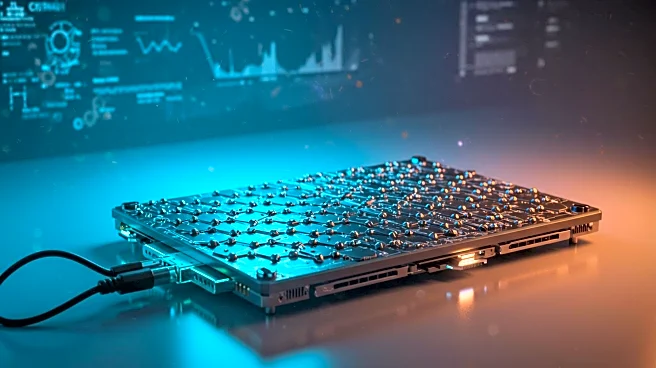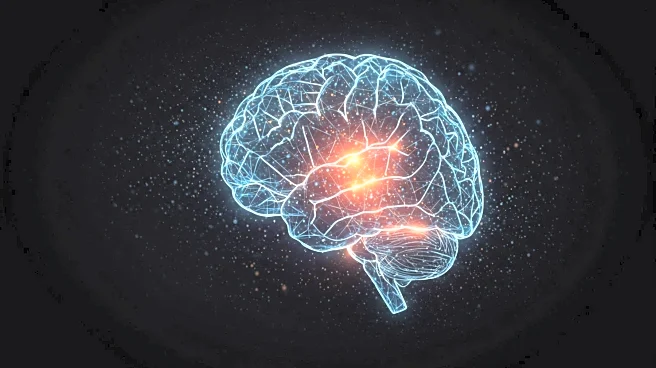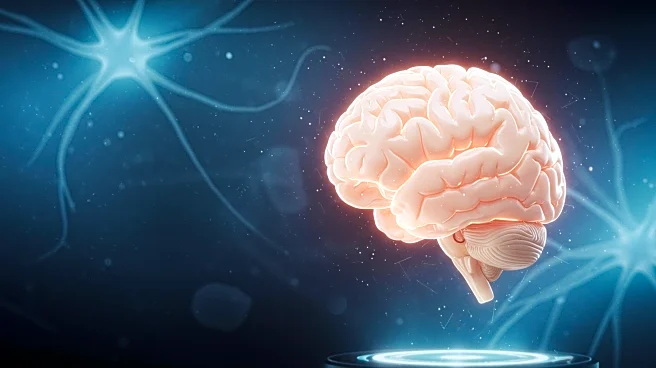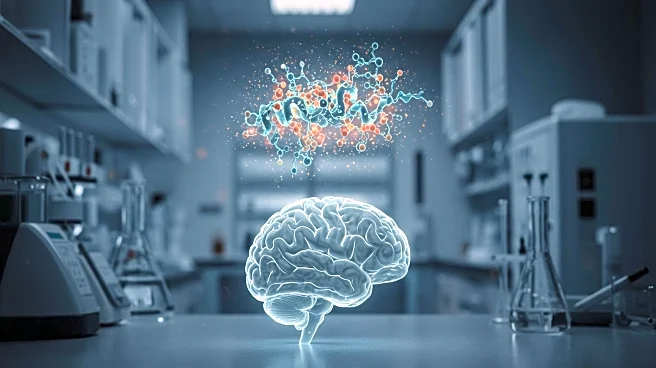Rapid Read • 8 min read
A recent study published in Nature investigates the activation mechanism of the kainate receptor GluK2-Neto2 complex. Researchers used patch-clamp current recordings and cryo-electron microscopy to analyze the receptor's function and structure. The study found that the presence of BPAM344 significantly slows desensitization of the receptor, with desensitization becoming 270 times slower compared to when BPAM is absent. The research also explored the structural changes in the receptor, revealing that the GluK2-Neto2 complex undergoes specific conformational changes upon activation by kainate and BPAM. These findings provide insights into the receptor's kinetics and potential regulatory mechanisms.
AD
Understanding the activation mechanism of the GluK2-Neto2 complex is crucial for developing targeted therapies for neurological disorders. Kainate receptors play a significant role in synaptic transmission and plasticity, and their dysfunction is associated with various neurological conditions. The study's findings could lead to advancements in drug development, offering new avenues for treating diseases such as epilepsy and neurodegenerative disorders. Additionally, the research contributes to the broader scientific understanding of receptor dynamics and their implications in brain function.
Further research is needed to explore the therapeutic potential of modulating the GluK2-Neto2 complex. Scientists may investigate the effects of different agonists and antagonists on the receptor's function, aiming to identify compounds that can effectively regulate its activity. Collaboration between neuroscientists and pharmaceutical companies could accelerate the development of new treatments based on these findings. The study also opens up possibilities for exploring similar mechanisms in other receptor complexes, potentially broadening the scope of neurological research.
The study highlights the importance of advanced imaging techniques like cryo-electron microscopy in understanding complex biological structures. The ethical considerations of manipulating receptor functions for therapeutic purposes must be addressed, ensuring that treatments are safe and effective. The research also underscores the need for interdisciplinary collaboration in neuroscience, combining expertise in molecular biology, pharmacology, and imaging technology.
AD
More Stories You Might Enjoy










